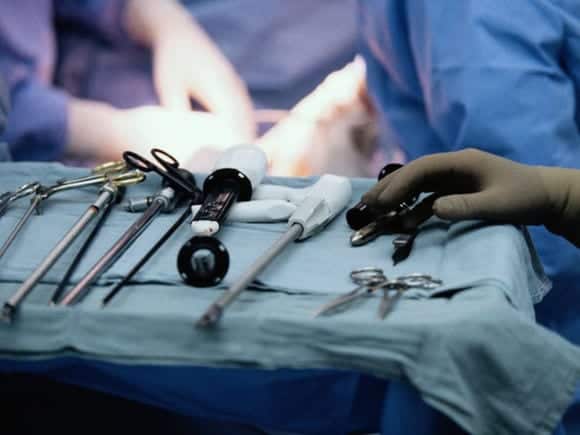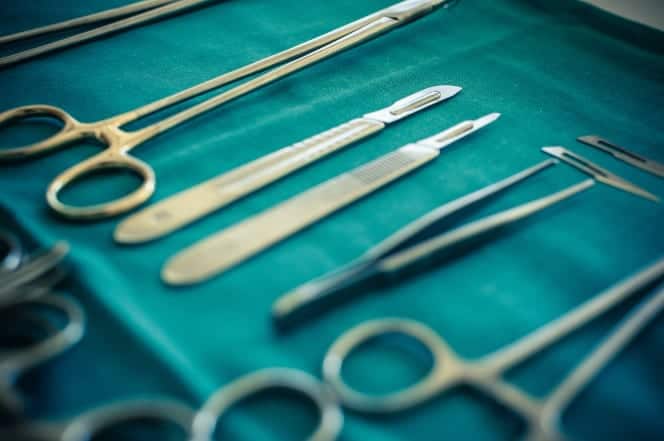The Dangers of Hair Transplant Medical Tourism: Medical tourism can be defined as the practice of traveling outside one’s country for the purpose of receiving medical care. In Hair Transplant Tourism, the individual is traveling to another country other than his / her own to specifically undergo a hair transplant surgery procedure. Originally the term applied to patients from underdeveloped countries traveling to developed countries, pursuing treatment of surgeries not available in their own homeland. However, the trend has now reversed; it has become popular for people living in developed areas to seek cheap surgeries (such as hair transplant tourism) in countries other than their own. Although the trend in medical tourism for cosmetic surgery is rising the outcome of surgery abroad often proves to be unsuccessful and dangerous. many patients acting on on the lure of cheap surgeries have ended up botched and placed in an awkward position of requiring expensive corrective hair transplant repair surgeries.
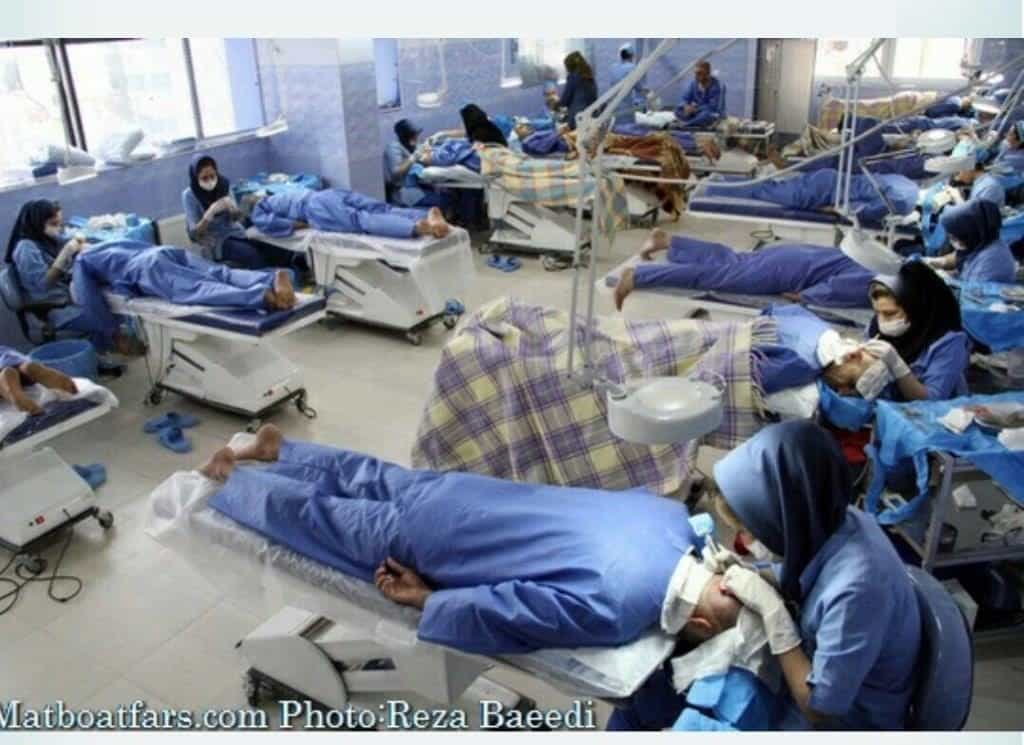
With over 40 million (over half of which are women) affected by hair loss in the United States, the thought of having a cheap hair transplant can lure individuals looking for cheaper alternatives, however, this comes with a high price of potential complications. Hair loss not only affects a person’s outward appearance but can also affect a person’s self-confidence, which in turn affects a person’s career, social life and personal relationships. For that reason, balding individuals may feel a strong sense of desperation when realizing they want or need a hair transplant. Despite having a strong sense of urgency, patients realize that hair transplant costs can be significant, making the lure of “cheap” prices of other countries tempting. This, however, can often result in devastating consequences and cost the patient more in the long run. Specific surgeries such as body hair transplant tourism and FUE hair transplant tourism can also lead to botched results without the proper surgeon.
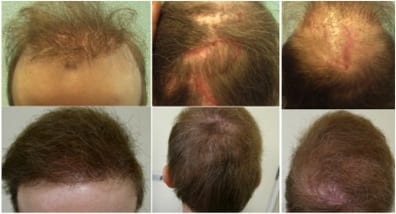
Why Costs Are Cheaper for Hair Transplant Tourism
Potential patients for FUE hair transplant medical tourism and hair restoration tourism may see cheaper costs in other countries that may tempt them into taking chances of the possible problems that often result from such adventures. Hurried decisions and risky surgeries often lead to poor outcomes. Less developed countries offer next-to-nothing prices for the simple fact that they can provide patients with a next-to-nothing guarantee and often poor services based on lowered standards and false promises. A hair transplant is a medical procedure that should be taken seriously and with the utmost care. Technicians or physicians in underdeveloped countries often cut corners to get the patient the cost they want, but not necessarily the outcome they deserve. With hair transplant costs so low, offshore doctors often perform many surgeries in a very little amount of time, cutting into the time they should spend with patients on an individual basis. Rushed surgeries eliminate the time and details the doctor should prioritize with the patient, thus often leading to poor results, which can lead to future reconstructive surgeries or life-threatening infections and/or complications. Last year, the Centers for Disease Control and Prevention (CDC) reported a case of 18 women from the East Coast that were hospitalized after cosmetic surgery in the Dominican Republic. The 18 women came down with an infection that was caused by a germ called mycobacteria, which causes disfigurement.
The Dangers of Hair Transplant Medical Tourism
In the photo shown below where the grafts obtained from a mass production hair transplant facility in Turkey, the question of graft compromise from exposure to the elements; Cross-contamination from assistants handling specimen from several patients is a concern. There is even the remote risk of grafting the hair from the wrong patient if the organization is sloppy. Such has been known to happen in Obstetrics where babies from several mothers are stacked in one room. One case of mislabeling can result in a mother going home with the wrong baby. A mislabeled tray in this scenario, and a patient ends up with hair grafts from another person would have deleterious results:
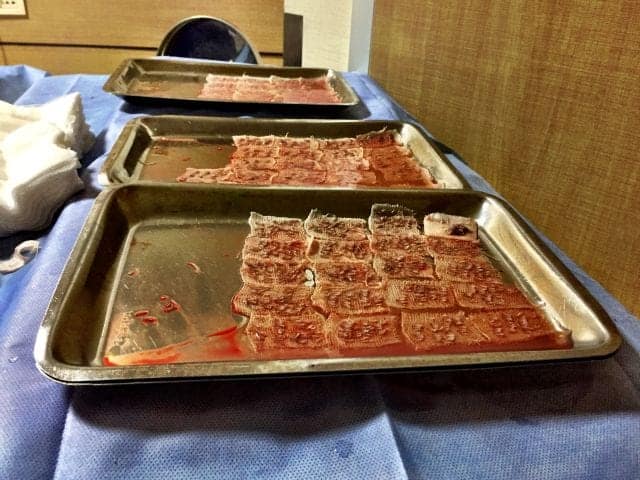
Another reason why transplant tourism or hair restoration tourism costs are cheap in developing countries is the fact that clinics are allowing unlicensed people (Often with no medical training whatsoever) to perform the surgeries rather than the actual doctor. Turkey is a prime example of a developing/underdeveloped country offering cheap FUE hair transplant medical tourism from inexperienced persons such as nurses and nonmedical personnel. Hair transplant clinics are springing up everywhere in Turkey due to the demand from developed countries and the competition of other nearby clinics. This demand and urgency for surgeries lead to hiring unqualified people to cut costs for the clinic and for the patient. Oftentimes the unqualified and unlicensed persons that are performing the surgeries are uncertified, and a doctor is only called to the procedure if a complication arises. In the end, cost-cutting can lead to botched results, afflicted patients, and expensive surgeries to “re-do” the initial one and to cover up scarring.
Hair Restoration Tourism Trend
As mentioned above, the hair restoration tourism trend in developing countries such as Turkey take on a more “cookie-cutter” mass production line (industrial scale) approach for surgeries; not taking the time and care for each individual. FUE hair transplant medical tourism has become so popular that this trend has led to Turkey’s income in 2015 to top $4.5 billion (USD). Because of the growing epidemic of unlicensed persons performing Surgery in Turkey, the country is passing laws that allow physicians to perform surgeries such as FUE hair transplants ONLY in hospitals. This unfortunately leads to physicians and technicians selling their services on the black market.
The International Society Of Hair Restoration Surgery ISHRS Cautions Individuals About Hair Transplant Tourism
Currently, the International Society of Hair Restoration Surgery (ISHRS) is concerned with the new medical tourism trend (hair restoration tourism). The ISHRS is urging potential patients who may be considering traveling to another country to do thorough research on their hair restoration physician and the surgical facility for hair restoration tourism. Many patients who receive care and surgeries do not realize the surgery or technicians performing the surgeries are illegal. There is also a practice called the “bait and switch” that some doctors perform, this is a scam where the patient is wooed by the physician’s online credentials but when the patient arrives for surgery, is surprised to find out it will actually be performed by the doctor’s assistant who is not licensed to perform surgery. It’s important to remember that although cheap costs may look attractive, this can come at a high price by setting patients at risk of misdiagnosis of hair disorders/related diseases, and surgeries that are not required. The ISHRS strongly urges and warns about potential risks that may jeopardize the patient’s safety and treatment outcomes from hair restoration tourism.
According to a doctor in Turkey which is one of the hair transplant tourism destination country lamenting about lack of quality control Most clinics completely disregard the rule. In the past five or six years, the race for clients has outweighed concerns about quality. it is common for patients to meet a doctor for a consultation before an operation and be led to believe that the doctor will be performing the surgery—when in fact, it ends up being done by a nurse or technician. Because inspectors from the Turkish Health Ministry are more than willing to take bribes in exchange for a warning that an official inspection is coming. “Someone pays the big money,” he says, and when the inspection happens, the clinic makes itself look like it’s operating fully above board.
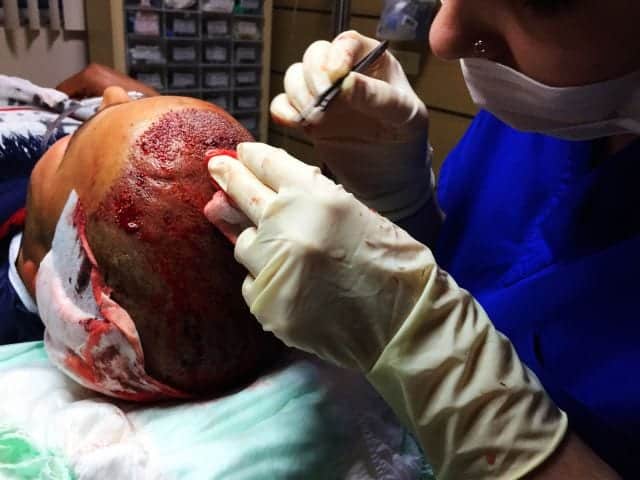
The ISHRS advises potential patients to ask the following questions when seeking hair transplant medical tourism and FUE hair transplant tourism.
- Will a doctor evaluate the hair loss and recommend a course of treatment? If not, who will recommend treatment? What is the surgeon’s training, education, licensing, and familiarity in treating hair loss?
- Who is involved in performing the surgery? What role will all parties play? What is the training, education, licensing, and familiarity of the staff performing the surgery?
- Will all parties performing or being involved in the surgery be licensed by the state? Will anyone not licensed make incisions or harvest grafts during the surgery? Are all parties involved in the surgery covered by malpractice insurance?
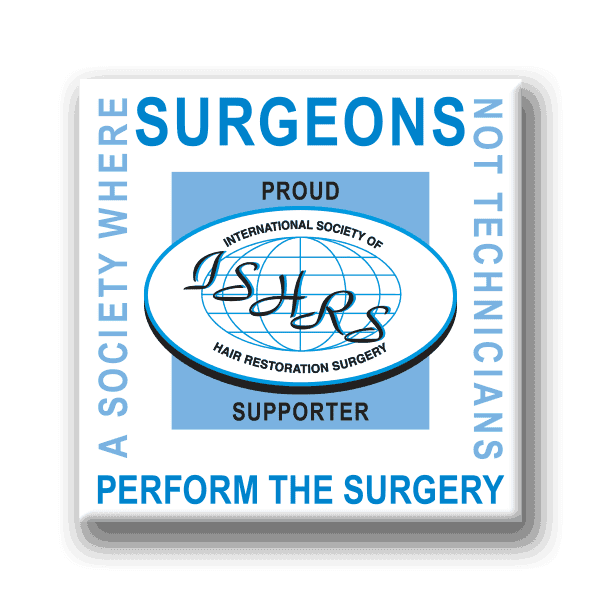
Regardless of these ISHRS prescribed precautions, having surgery such as FUE hair transplant tourism in another country portends a lot of risks, many of which are unavoidable. For instance, you cannot expect standard care or after-care follow-up management since you are physically removed from the country when you return home. Should you have a problem, you would have limited recourse given and divergent legal, ethical, and medical standards in most of these countries.
To schedule a consultation with Dr. Umar, a local Los Angeles and world-renowned hair transplant surgeon, find his free consultation form here.
Medical Tourism and Lack of Long Term Care
After a hair transplant surgery, patients will have questions and concerns. There are also possible difficulties and complications that may arise after surgery regardless of how well it was done or where it was performed. These issues must be handled by the original doctor who performed the surgery for the best and most accurate outcome. The doctor who performed the surgery should be familiar with the details of the patient and the intricate details of the procedure that was performed. Patients who resort to medical tourism have little chance of follow-ups, little chance of treating any kind of infections and complication, and even a smaller chance of asking questions if any should arise. Patients who choose medical tourism, are in essence, giving up their right to ANY post-op care that could potentially lead to botched surgeries, life-threatening infections, or in some cases even death. Dr. Umar has been inundated with questions and by patients who seek his help after undergoing hair transplants in foreign countries. Most of these patients show up soon after the surgery with major concerns after getting poor responses from the foreign clinic. Patients quickly realized that as soon as payment is made and surgery is completed, the foreign clinic often has no interest in follow-ups. This is further compounded by logistical difficulties and language barriers.
Legal Recourse and Transplant Tourism
A poor outcome from choosing a medical tourism/hair transplant tourism procedure is very difficult to address legally. For the most part, patients are under the jurisdiction of foreign laws and have to abide by those laws in the country the surgery was performed. Bringing a medical tourism malpractice case to trial in the United States is almost null and void because of the great differentiating of laws. Reconciling two different legal systems is complicated, messy and for the most part, the patient’s surgery doesn’t exist as soon they enter back into their own home country.
What Is Needed For The Best Hair Transplant Results
Patients must inform themselves on the factors that go into such outcomes for hair transplant tourism:
- Hair follicles must be carefully selected. The physician must make these decisions based on an evaluation for each particular patient. For hairline and temple procedures, some of the patient’s hairs need to be very thin in order to create results that are undetectable. Selecting suitable hairs cannot be rushed.
- Follicles must be delicately handled once they are extracted from the donor area (such as in an FUE hair transplant). Damage from an underqualified staff member will affect their survival and ability to grow.
- The doctor must insert the hair follicles in the balding areas by following natural growth patterns, which takes great craftsmanship. The doctor performing the surgery must understand different angles and orientations on various parts of the head. Patients who opt for medical tourism/body hair transplant tourism/hair restoration tourism may not be treated by a doctor who fully understands these details (they may even be treated by a nurse or technician, NOT a licensed physician).
- The physician must have an artistic eye to create the best-looking hairline for a patient. This region is what others are concerned with the most. Among other factors, a hairline must be symmetrical. It also must be placed at the appropriate height on the forehead.
Many patients face the challenge of having depleted donor areas. Such patients would typically require the use of non-head hair donor sources which require a higher skill set to perform hence more expensive. For this reason, the lure of cheap hair transplant surgeries may temp some to seek body hair transplant tourism in underdeveloped countries. According to Dr. Umar who recently published the first large-scale study on body hair transplants, these are highly skilled procedures and should only be dealt with by properly equipped clinics with experienced and skilled licensed surgical personnel. Because body hair grafts are extremely delicate when compared to head-derived grafts the failure is very high in unskilled hands. There is also a likely hood of severe complications and body disfigurement in these situations. For that reason, individuals seeking Body hair transplant should avoid using cheap costs as their criteria and reasoning for resorting to hair transplant tourism. Dr. Umar’s precise technique and his patented Dr.UGraft for FUE is the leading provider of body hair transplantation having the most experience in the field supported by a robust patient result gallery and publications
Fixing Problems Created By Hair Transplant Tourism Before and After Photos Using Dr.UGraft By Dr. U In Los Angeles
Dr. Umar very frequently has to fix problems in patients who chose to have their transplants performed in portly vetted foreign clinics. The following is only a sample from a very vast case pool of similar stories:
The Dangers of Hair Transplant Medical Tourism: Correcting Poor Coverage and Asymmetric Hairline Before and After Photos
Case #1: A patient from Northern California who goes to an Asian country for cheap FUE body hair transplant surgery ends up with poor coverage and an asymmetric hairline. The sad commentary to these kinds of situations is that patients engaged in medical tourism to underdeveloped countries with the purpose of saving on costs end up paying more than they would have if they have had their surgery properly the first time. Why, because not only have they wasted their finances on the poor surgery at the other country, they are now having to pay for the corrective work.
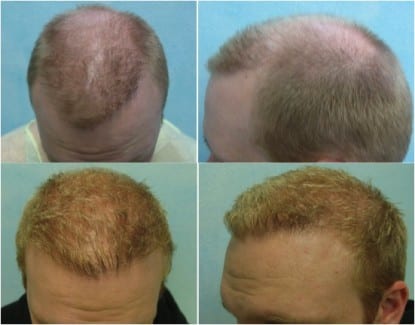
VIDEO: The Dangers of Cheap Cost-Based Hair Transplant Medical Tourism
The Dangers of Hair Transplant Medical Tourism: Correcting Poor Coverage and Botched Hair transplant From Middle East Before and After Photos
Not all tourism is bad. Medical tourism should be undertaken for the sake of getting better quality care and results only, and never on account of getting cheaper surgery. This patient based in the middle east went to a clinic in his country and ended up with a very poor outcome as his before photos shows. Even though corrective surgery was much more expensive after consulting Dr. U, he decided he engaged in hair transplant tourism for the sake of getting a quality result by flying to Dr. U in Los Angeles for a Dr.UGraft hair transplant repair that utilized beard and body hair. The patient ended up very happy with his medical hair transplant tourism, however, He has ended up paying for two surgeries. one botched and the other successful.
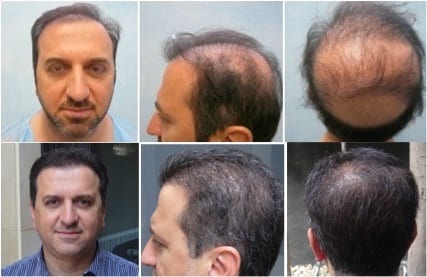
VIDEO: Good medical Hair Restoration Surgery Tourism Should be For Reason Of Getting Better Care and Not For Reason of Cheaper Costs.
Cheap costs in transplant tourism should never be prioritized over quality. A reduced price can often reflect lack of expertise. This is the most important factor that is needed for the best results. Highly skilled surgeons will have extensive experience in hair transplant procedures and will also have top-notch medical training. As part of their specialization, surgeons should also have a background in dermatology or in plastic surgery. There is no guarantee that patients will be treated by doctors of this caliber if they choose medical tourism over doctors in developed countries. Dr. Umar is certified by the American Board of Dermatology, prior to which he was certified by the American Board of Internal Medicine. He also completed a fellowship training in cosmetic surgery under the direction of the American Academy of Cosmetic Surgery. As a pioneer in hair transplant surgery, he is widely published and recognized in his field.
Good Hair Transplant Medical Tourism Prevents Disaster. Patient travels from The United Kingdom UK, To Dr. Umar In Los Angeles To Quality
A wise patient would do his research in deciding how to choose their hair transplant clinic. Looking at their unique situation they can determine the best clinics or doctors for delivering the result they need and avoid the headache of gambling away their precious hair donor supply and finances from putting cheap cost ahead of quality work.
UK to Los Angeles Medical Hair Transplant Tourism Save Severely Bald Patient Before and After Photos
Having realized that his baldness of Norwood 7 was too severe for conventional hair transplant approach, this British patient who is based in the United Kingdom – UK quickly realized that Dr. Umar is best suited for the task of restoring his baldness credibly. He read all about Dr. U and his Dr.UGraft advanced FUE and decided that even though Dr. Umar is located in Los Angeles California, that his interest is better served flying to the United States for his hair restoration.
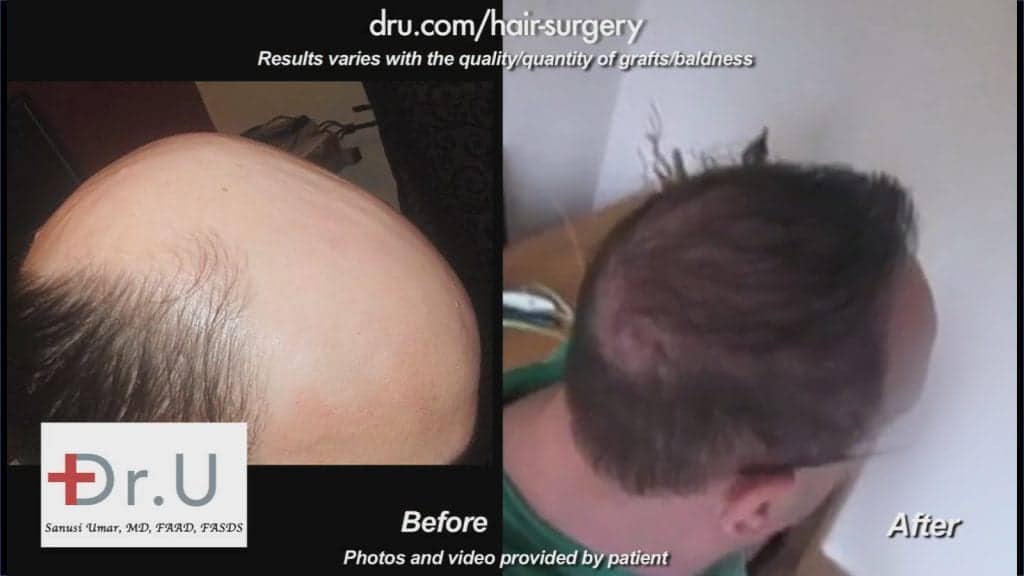
VIDEO: UK to Los Angeles Medical Hair Transplant Tourism Save Severely Bald Patient Results
A Final Note on Hair Restoration Tourism
Low costs and the perk of taking the opportunity for a vacation abroad can seem appealing for many potential patients. However, individuals must not lose sight of obtaining the ultimate goal of looking and feeling their best. With this goal in mind, the patient should trust their physician, the clinic, and staff to give and perform the highest service possible. With the risky circumstances of FUE hair transplant tourism, medical tourism, and hair restoration tourism, hair transplant patients may end up needing more surgeries (after a botched job) and suffer from emotional damage, costing them much more in the long run. Specific surgeries such as body hair transplant tourism can be even riskier if performed by surgeons in other countries. With Dr. Umar’s knowledge and advanced technology in performing FUE hair transplants with the patented Dr.UGraft tools, patients can feel at ease and trust the vast experience he offers. To schedule a consultation with Dr. Umar please call 1-800-DRUCLINIC (499-3782).
The Dangers of Hair Transplant Medical Tourism FAQ
What is the price difference in FUE hair transplant tourism between developed and undeveloped countries?
Developed countries often base their prices to fit the patient’s individual needs, unlike FUE hair transplant tourism. In the case of Dr. U, he prices per graft (the hair follicle is extracted). Undeveloped countries can offer FUE hair transplant tourism procedures at very cheap prices, but surgeries are typically done poorly in a mass production line manner. Often the procedure is performed by unlicensed and unskilled personnel called technicians, medical assistants, or nurses leading to an increased potential for complications, and botched surgeries. If a clinic is offering a flat price, this is usually an indication there is no reliability on the number of grafts. FUE hair transplant tourism is a risk patient shouldn’t be advised to take.
Body hair transplant tourism: How common is infection?
Surgeries such as body hair transplant tourism can be extremely difficult in underdeveloped countries as the skill of the surgeon may be lacking. Often, the proper equipment is missing and procedures may be performed under unsanitary conditions. This often leads to complications such as infection as different countries have different standards of sanitation. Medications or antibiotics used to treat the infections post-surgery may also be of low grade or even have inaccurate ingredients.
VIDEO Of Dr. U Hair Transplant Repair Patient: You Get What You Pay For:
Most patients that end up going to underdeveloped countries do so on account of cheap costs. The adage that you get what you pay for often holds true in this case. Here is a patient who had a very poor experience from poor choices in getting his hair transplants. After going with a clinic that offered him deals and promised him great results, he ended up scarred, still bald, and psychologically traumatized. This is his testimony in his own words capture in the video after he was rescued by Dr U who used his Dr.UGraft tools and methods to rescue him:
How Can I Get A Good Quality Low Budget Hair Transplant Without Resorting To FUE Hair Transplant Tourism?
Saving money on a legitimate scale doesn’t mean you must sacrifice good long-term results. If you are on a budget but still wish to work with a reputable clinic and doctor, such as Dr. Umar there are other ways to achieve this. The following list is possible ways of achieving first-class low-risk surgery without risking the perils of hair transplant tourism (specifically FUE hair transplant tourism).
- Granting rights to use your results for publications and marketing for surgery fee discounts
- Standby booking means you get called in to have surgery at shorter notice typically within 2 weeks based on cancellations by other parties. This usually attracts a price discount
- Inquire about ongoing promotions: The clinic may once in a while have promotions that you can take advantage of.
- Go conservative or adopt a less is more hair transplant approach. Fewer grafts translate to less cost. It is better to have a conservative restoration than to have tons of grafts placed in a botched manner. Not only would you go through the additional expense of requiring reparative surgery and losing your initial investment, but you would also lose irreplaceable and valuable donor hair
The Dr. U Hair Clinic is fully certified and one of the most recognized offices in Los Angeles for hair transplant surgery. Ask the man behind the brand any questions you may have on FUE hair transplant by clicking on the link below:
Further Reading:
See examples of Dr. Umar’s hair transplant repair surgeries.
Read more about ethical guidelines and practices in FUE hair transplant surgery.
Find out what qualities make a hair transplant clinic legitimate.
Click here to learn more about the cost of a good hair transplant.

